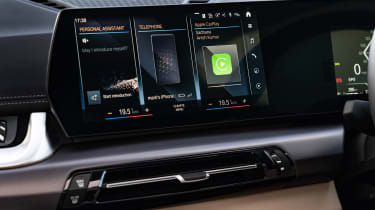BMW X1 review - Interior, design and technology
Offering more interior space and improved onboard technology, BMW has made the X1 even more appealing to family drivers

BMW has increased the size of the third-generation X1 so it now looks more commanding on the road, and there’s enough interior space for it to be considered a genuine everyday family car. Its 0.27 drag coefficient means it cuts through the air more smoothly, too, which adds to its sense of refinement.
The X1’s interior design holds more of a surprise, however. There’s an all-new fascia with a pair of curved screens taking centre stage, while the quality of the cabin materials has noticeably improved over the previous model.
The layout is ergonomically sound, although you will notice that there are fewer physical buttons and switches – the most significant change, and one we’re unsure is actually a step forward, is the removal of the rotary iDrive controller. Storage options up front are a little different than before; there’s a small tray located in the armrest with a larger space underneath, while we like the way smartphones are held in place with a useful hinged clip.
We have experienced a few technical niggles with our own BMW X1 xDrive32i long-term test car. After conducting a series of routine software updates via the iDrive infotainment system, the car’s fuel gauge and range readouts started displaying incorrectly and the interior light often switched itself on for no apparent reason. Apart from these relatively small faults, the technology has impressed overall.
Sat-nav, stereo and infotainment
After years of granting users a range of input methods, BMW has finally ditched its iDrive click wheel controller. We think that’s a shame, because while touchscreens are much faster for entering commands when parked, the click wheel was perfect for minor tweaks to settings on the move, because you didn’t need to take your eyes off the road.
BMW reckons that its voice-recognition tech is now good enough to take its place. It’ll learn your accent and mannerisms over time, and although our two weeks with the car weren’t enough to let this develop, it seemed to be accurate, only once confusing a radio station request.
As with the system in the electric BMW i4, the climate controls have moved to the screen. While we’d prefer physical switches, these are one of the best of their type; the temperature settings are unobtrusive, and the full menu is easily accessible. One minor gripe is that some screen shortcuts are very small.





